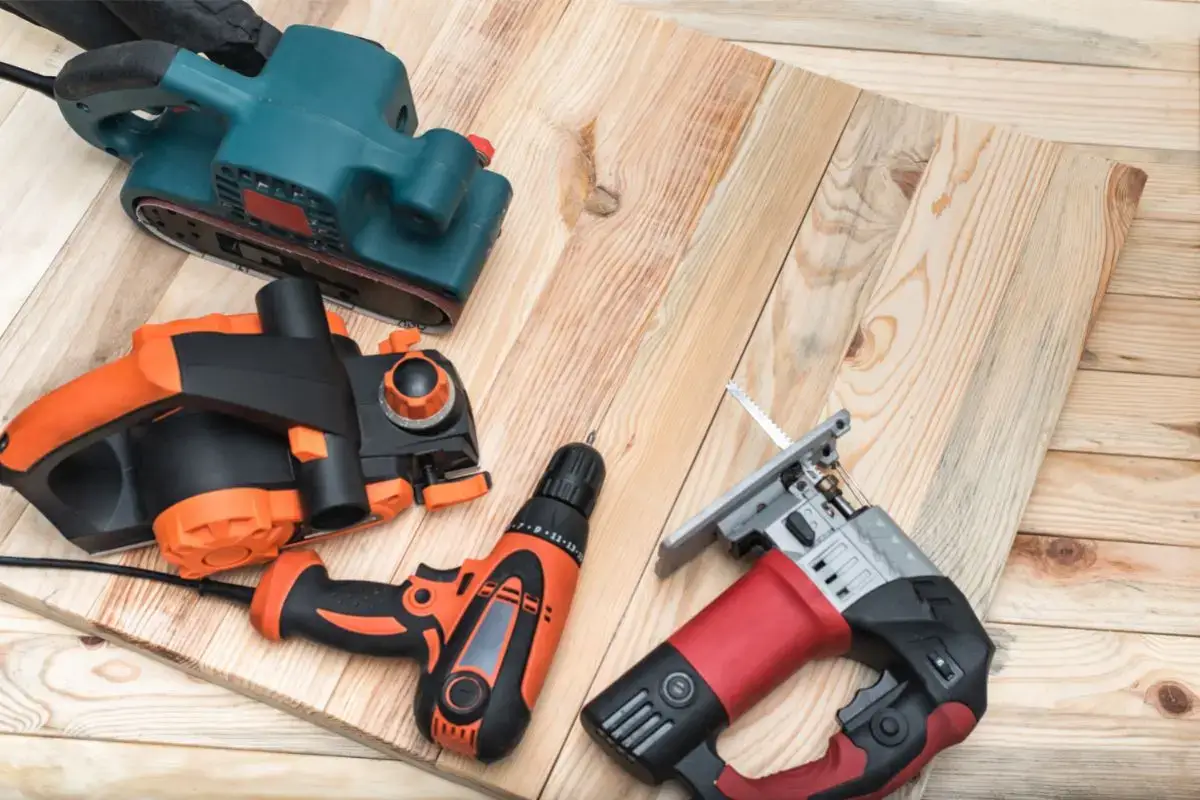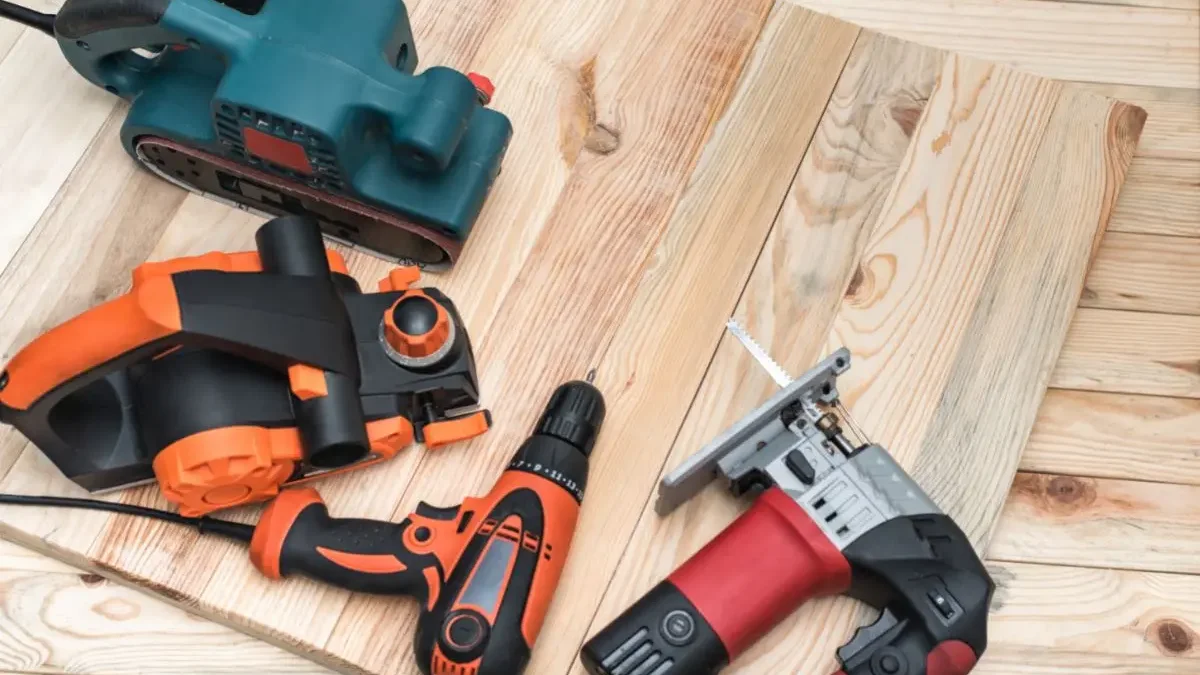
Power tools are an integral part of any woodworking project. They make the job much easier and faster, from drilling holes to cutting curves. But with so many different power tools available, knowing which ones are the best for your project can be challenging. This article will cover the basics of power tools, why they’re necessary, and the different types available. We’ll also look at specific tools, such as drills, circular saws, routers, sanders, miter saws, planers, and jigsaws. Knowing the basics of each type of tool will help you decide which is best for your project.
Why Power Tools are Necessary
Power tools are a necessity for woodworking projects because they are easier to use and require less time and energy to get the job done. They come in various types, each suited for a specific job. The most common power tools used in woodworking are drills, circular saws, routers, sanders, miter saws, planers, and jigsaws.
Drills are used to make holes and drive screws.
Circular saws are used to cut straight and curved lines.
Routers are used for carving and shaping.
Sanders are used to smooth and finish surfaces. Miter saws are used for angled cuts. Planers are used for smoothing and shaping large boards. Jigsaws are used for intricate curves and shapes. You can make your woodworking projects easier and faster with the right power tools.
Types of Power Tools
When it comes to power tools, there are many types to choose from. Drills are the most common and necessary for many tasks. A drill is used to bore holes into wood and other materials; circular saws are used to cut wood and other materials that are too thick to be cut using a hand saw. Routers are used to create grooves, inlays, and other intricate cuts. Sanders are used to smooth out rough edges and surfaces. Miter saws make angled and beveled cuts in wood, while planers are used to smooth and shape wood surfaces. Finally, jigsaws are used to cut curved or intricate shapes in wood and other materials. Each tool has its unique purpose, so it’s essential to know which one to use for which job.
Drills
Drills are a must-have for any woodworker. They can be used for drilling pilot holes, making holes for dowels and screws, and driving in fasteners. The two main types of drills are corded and cordless. Corded drills are more powerful, but cordless drills offer more portability.
Circular Saws
Circular saws are incredibly versatile and can be used for various tasks. They feature a round blade with teeth that can spin at high speeds for maximum efficiency. They are typically used for straight cuts but can also make curved cuts, depending on the blade. Additionally, they can cut through various materials, including wood, plastic, and metal.
Routers
Routers are versatile tools that can shape edges, create grooves, cut out patterns, etc. They can be used with various router bits designed for specific tasks and with different materials, like wood and plastics. Routers are usually powered by electricity, with some models being cordless and some powered by air.
Sanders
Sanders are essential for sanding down and finishing your woodworking projects. They come in various shapes and sizes, from belt sanders to orbital sanders. Belt sanders are typically used to remove large amounts of material quickly and efficiently, while orbital sanders are used for precision sanding and finishing. When using a sander, selecting the correct grit for the job is crucial, as this will determine the amount of material removed and the level of finish achieved.
Miter Saws
Miter saws are great for making precise angled cuts and can be used for trimming door frames and creating picture frames. They usually have a motor that drives a circular saw blade forward and backward at a set speed. The saw is mounted on a base that can be adjusted to different angles, allowing the user to make angled cuts easily.
Planers
Planers are essential for creating smooth, even surfaces by trimming off layers of wood from a piece. Planers come in various sizes, from large heavy-duty models to smaller, handheld versions. They are also available with adjustable depth settings, allowing you to work with different wood thicknesses. For example, some types of wood planers have adjustable blades that allow for a precise finish on any type of wood. Always wear safety glasses and gloves to protect yourself from flying wood chips when using a planer. Use a steady, even stroke when running the planer along the wood’s surface. This will ensure that the wood remains even and smooth.
Jigsaws
Jigsaws are ideal for intricate cuts, such as curved lines, due to their small blades and easy maneuverability. They are also great for cutting circles, as their blades can easily be adjusted to fit any radius. They are lightweight, generally easier to use than larger saws, and can be used for various materials such as wood, plastic, and metal.
Conclusion
Woodworking can be profitable as well as an enjoyable hobby. Knowing the types of power tools available and their functions is imperative to complete any project. Whether you’re a novice or a seasoned pro, having a solid grasp on the fundamentals of power tools will give you the confidence you need to make beautiful pieces of furniture.
Gray Williams
Related posts
Stay connected
- How LoveOn Chat Is Becoming the Most Versatile AI Companion for Digital UsersThe internet keeps shifting toward hyper-personal interaction, and AI companions are at the center of this shift. What used to be simple chatbots are now evolving into emotionally aware, adaptive, and multi-functional digital partners. Among the new generation of platforms, LoveOn Chat is becoming one... The post How LoveOn Chat Is Becoming the Most Versatile […]

